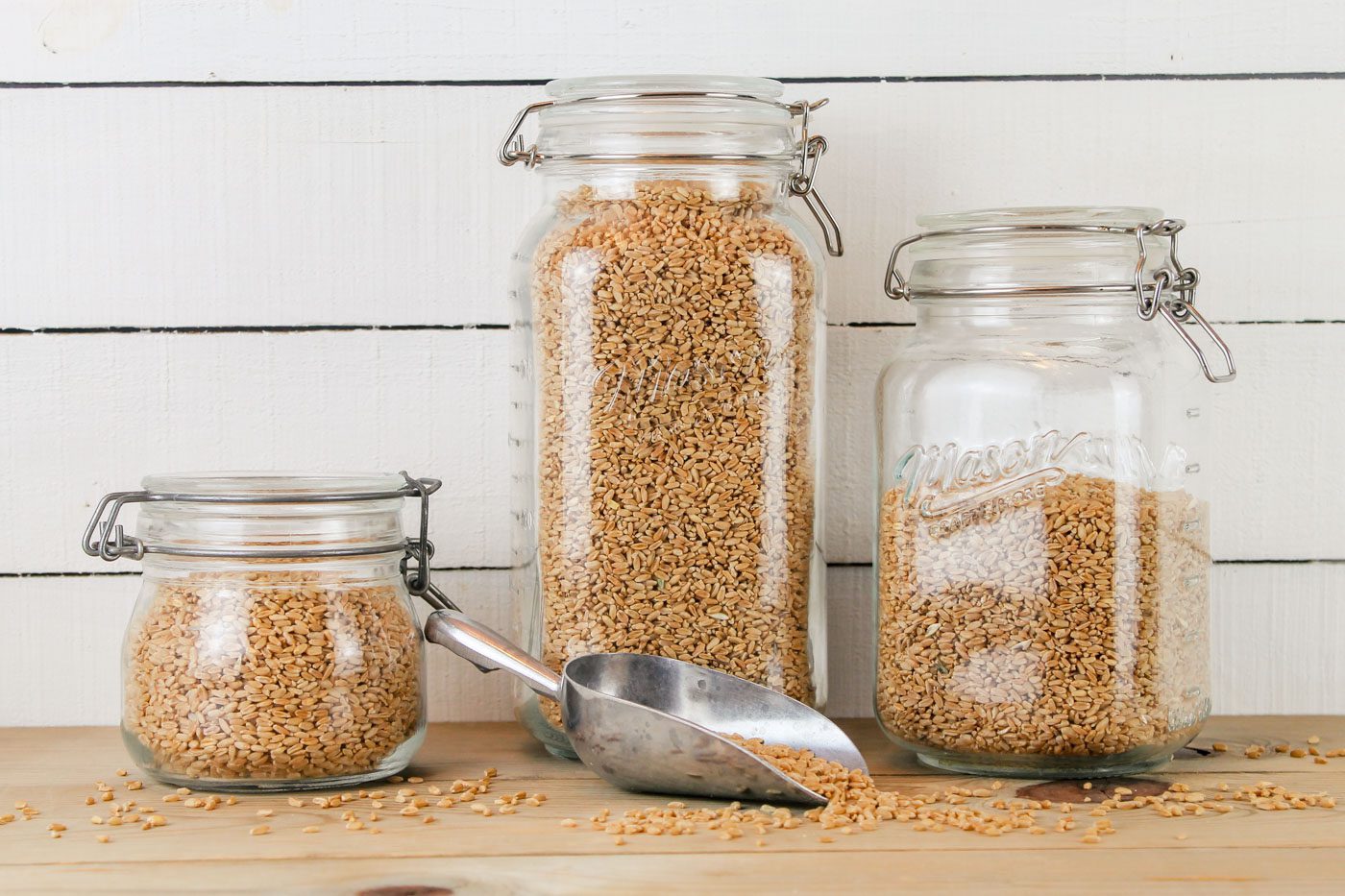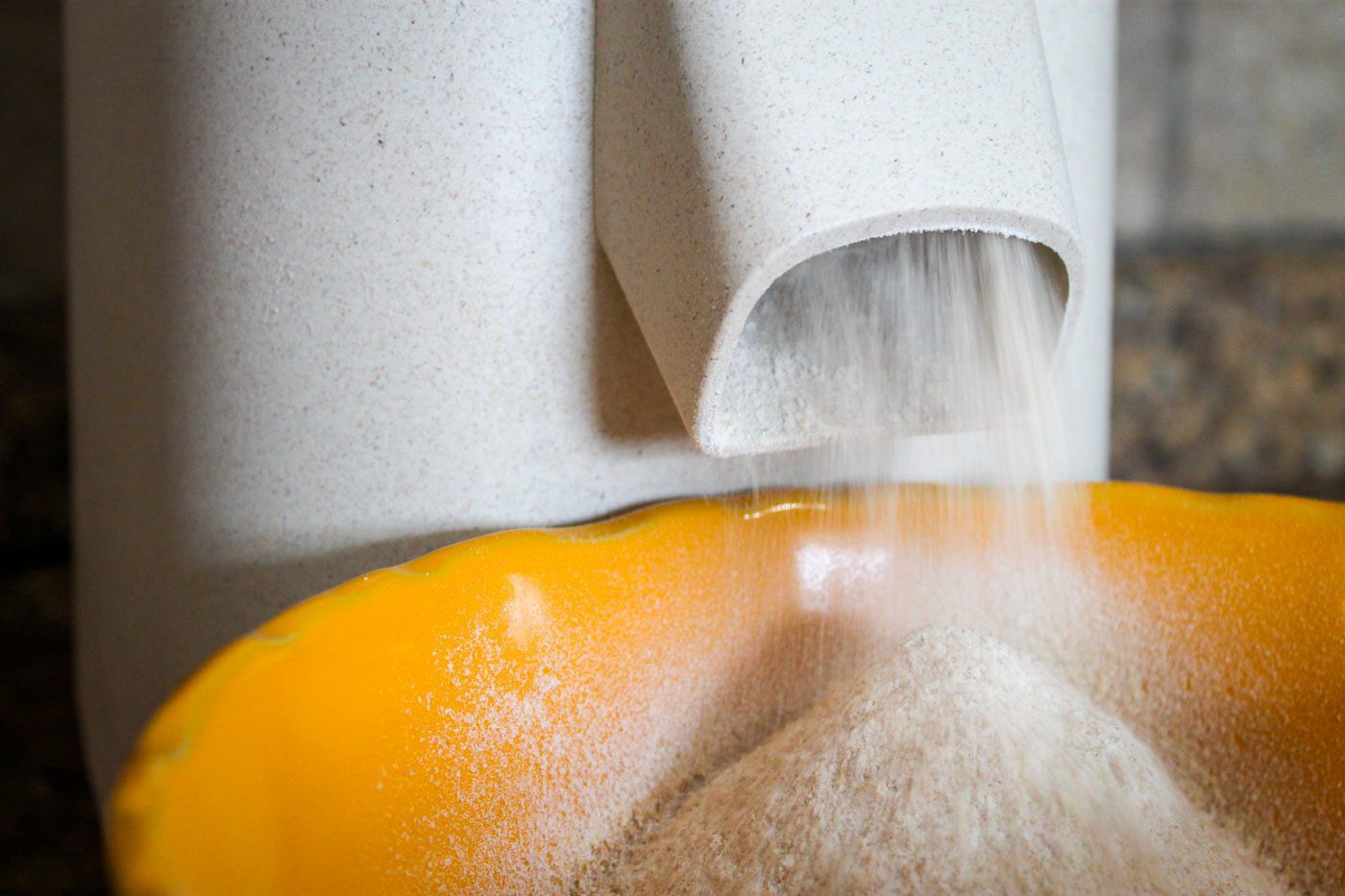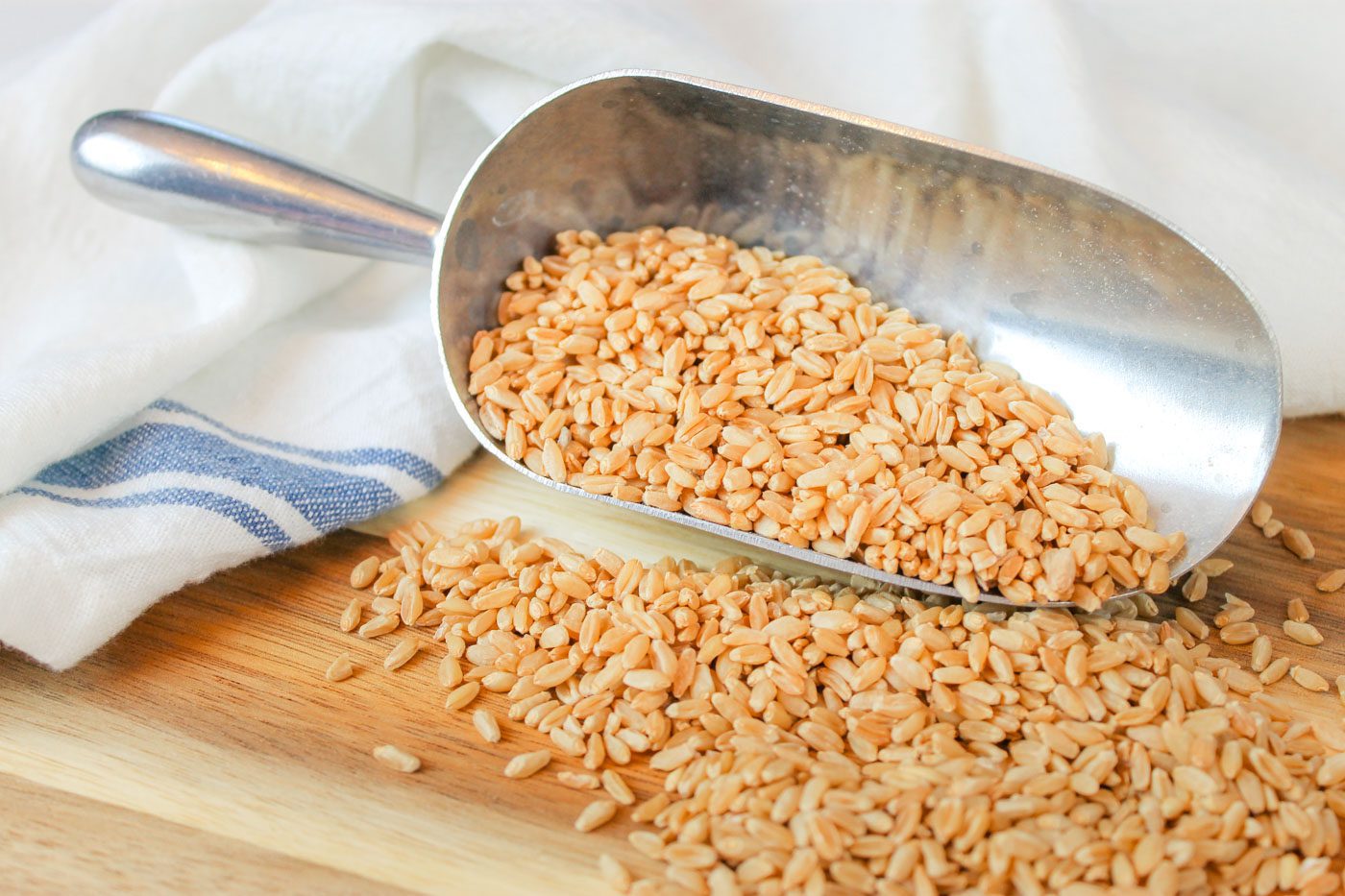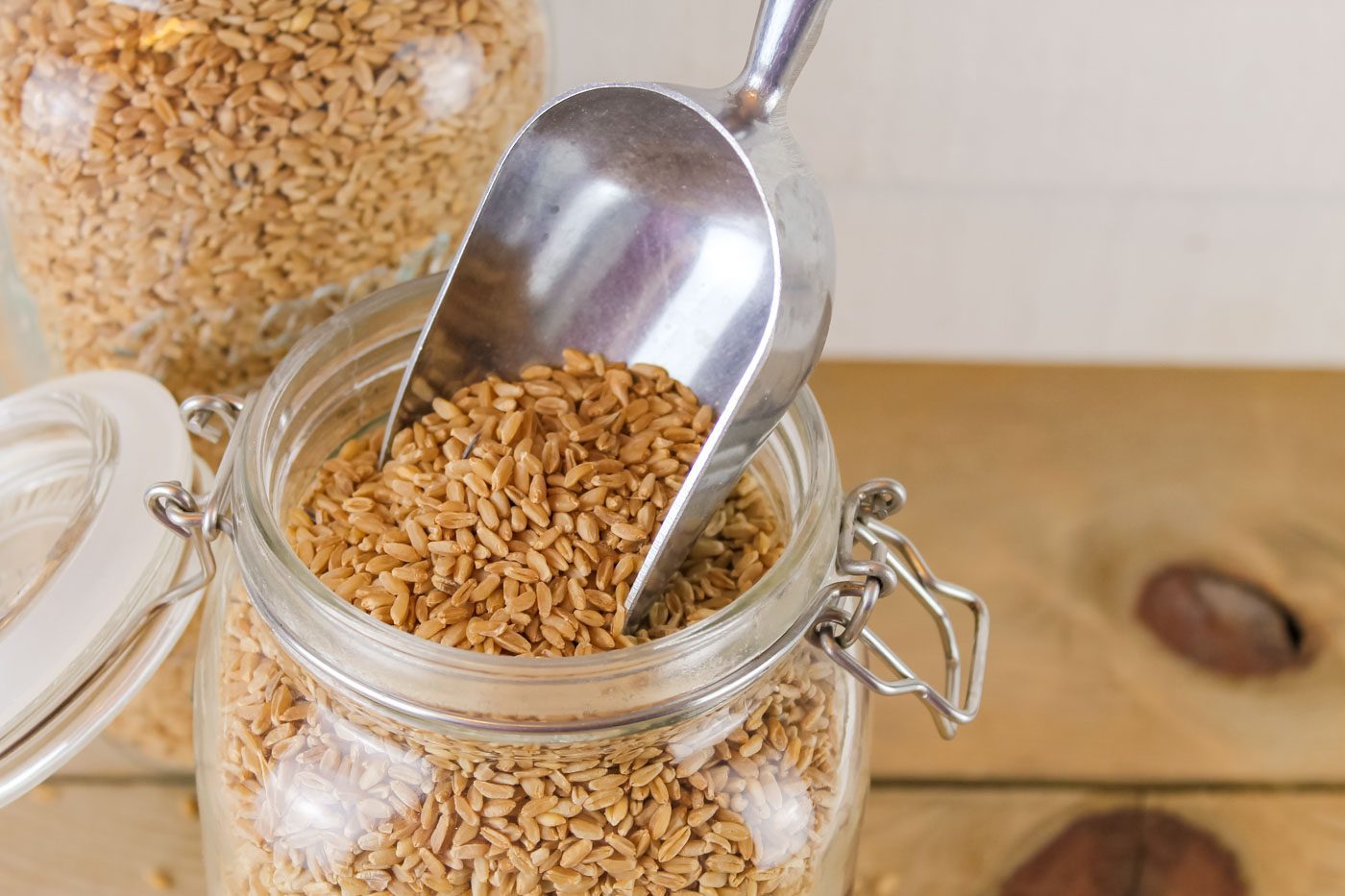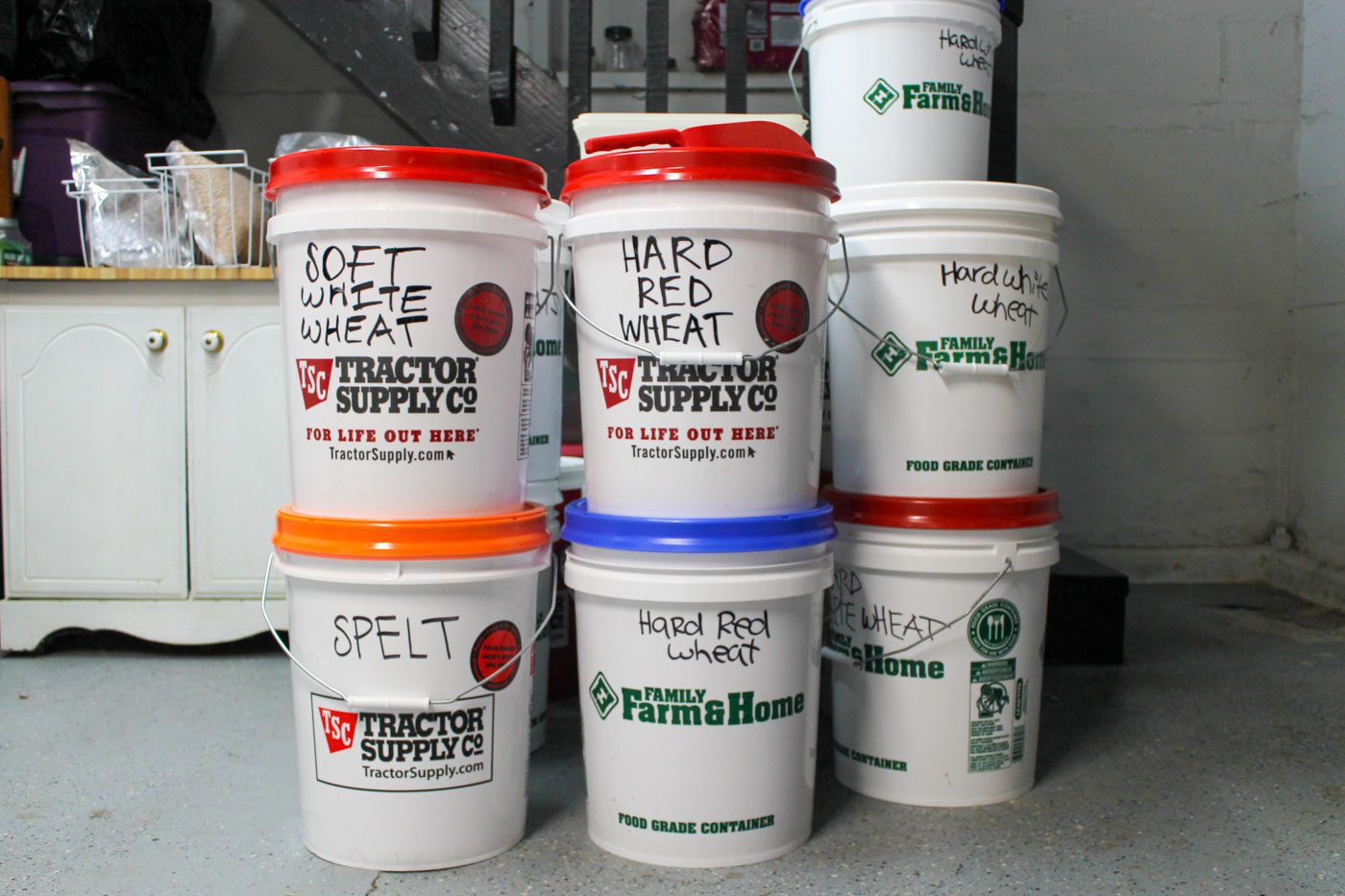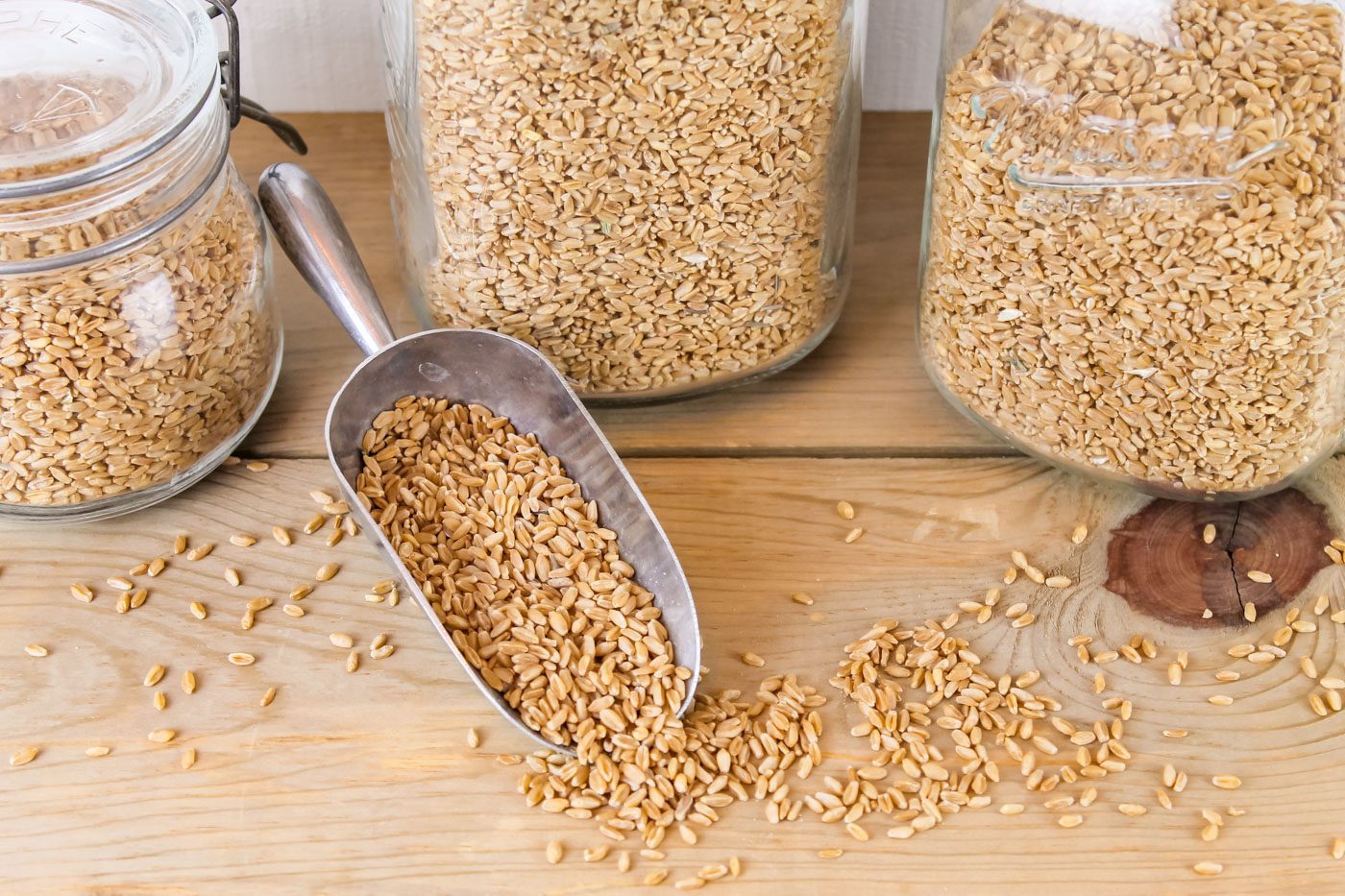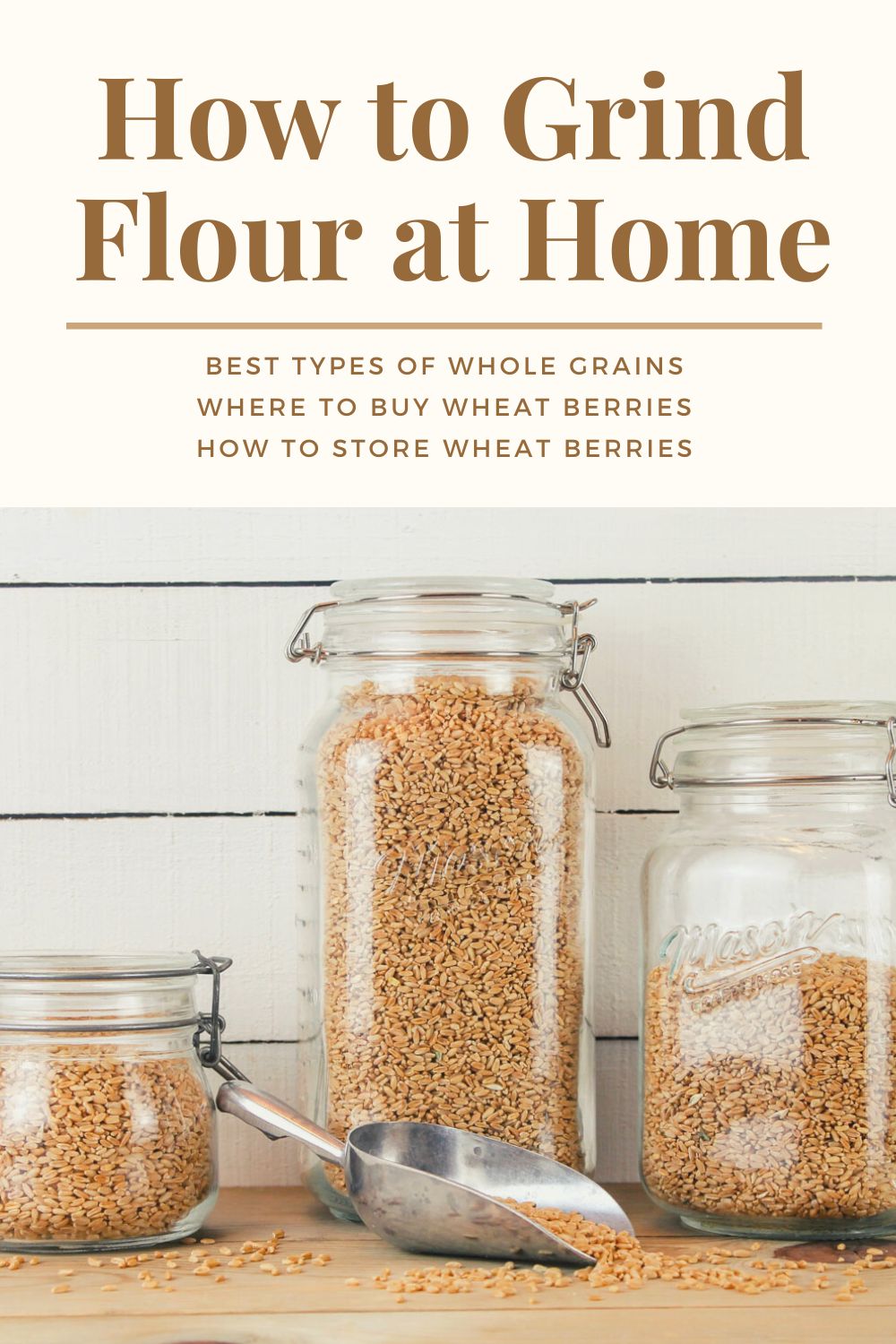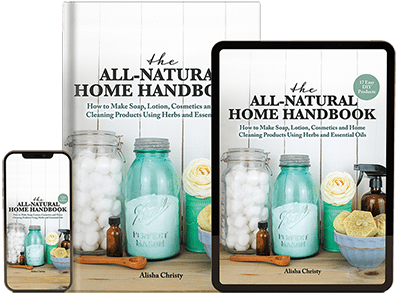Start adding more nutrition into your diet by milling flour right at home. Learn the benefits of grinding grains, how to make flour in less than a minute, where and which grains to buy and so much more. With very little hands on time, you can easily mill flour and enjoy fresh, delicious baked goods from your very own kitchen.
Homesteaders are always game for trying something new. We are intrigued by the unusual. Accustomed to going against the norm. Thrive on the ways things used to be and now are considered to be old fashioned or out of date.
The gateway into homesteading often starts by planting a garden. Followed by chickens. Various forms of livestock. Making food from scratch. Natural medicine. Fermenting, canning and filling the pantry with bulk food items to feed our family for months. Much of the homesteading lifestyle revolves around food. And not just any food but homegrown, organic food that truly feeds and nourishes the body as God intended.
One such food comes in the form of a wheat berry. This small grain is jam packed full of vitamins, minerals and plenty of fiber. But you can only receive these nutrients if you grind your own flour at home. A bag of store bought flour, organic and non organic, have these essential nutrients removed to prevent spoilage.
For years I baked with all purpose flour, unaware of the missing nutrition. It wasn’t until a few years ago that my family discovered not only the importance of grinding your own flour but also the depth of flavor fresh ground flour offers. By using an electric mill, I could quickly turn a handful of wheat berries into a cup of flour. Today I love to bake with my fresh milled flour and it makes me feel good knowing I am providing wholesome food for my family in every meal I make.
What are Wheat Berries?
A wheat berry is an edible kernel that comes from the head of a wheat plant. The hull is removed, leaving the whole grain in tact with the germ, bran and endosperm. Before processing, the wheat berry contains many nutritious vitamins, minerals and other nutrients. Wheat berries have a similar look to brown rice and can be used for cooking and sprouting. When ground in a grain mill, the wheat berries turn into flour and are used to make everything from breads and cookies to tortillas and muffins.
What is Freshly Milled Flour?
Freshly milled flour is created when you take a grain, such as hard white wheat berries and run it through a flour mill transforming it into fresh ground flour that can be use to make breads and various other baked goods. The reason people choose to grind flour at home is largely due to the fact that fresh ground flour retains essential nutrients unlike processed commercial flour.
How to Make Wheat Flour at Home
The thought of grinding flour at home may seem like a tedious, time consuming task. But that couldn’t be further from the truth. Transforming wheat berries into flour takes just a few moments longer than it does to scoop out store bought flour from a bag. Grinding flour at home is easy when you have the right tools for the job! There are a variety of mill styles to choose from but most modern flour mills make it easy to grind flour at home. I have an electric flour mill from Mockmill. The Mockmill 100 Stone Grain Mill uses two stones to grind the grains. I simply turn the mill on, pour my desired grain into the hopper and within minutes I have fresh ground flour! No fuss or putting forth the effort of grinding flour by hand.
Is Freshly Milled Flour More Nutritious?
Yes! Today a bag of flour from the grocery store does not provide the fiber and nutrients that your body needs. When grain is kept whole, it retains all of its nutrients and oils. As soon as the bran (the outer hard shell) is broken, the nutrients deteriorate quickly. Commercially sold flour can turn rancid if the oil-rich germ and other nutrients are left. In order to avoid this, commercial flour must remove these components so that the flour is shelf stable. Even if the flour is organic or labeled as enriched, there is absolutely no comparison to the health benefits of milling your own flour at home. By milling your own flour it ensures that you will get the most nutrients, vitamins and fiber.
Best Types of Whole Grains
Hard White Wheat – This type of grain has a high amount of protein which makes it an excellent choice for making yeast breads. For bread recipes and many other baking recipes that call for all purpose flour, such as pancakes, pitas, waffles and rolls, hard white wheat is a great substitute.
Hard Red Wheat – Red wheat is very similar to hard white wheat apart from the difference in coloring and taste. Hard red wheat is slightly darker in color and has a nuttier flavor. I use the red wheat just like I use the white wheat in yeast breads, pretzels and pizza dough recipes.
Soft White Wheat – Due to its lower amount of protein soft white wheat is better suited for making baked goods such as brownies, cookies and muffins. Substitute soft white wheat when a recipe calls for cake or pastry flour.
Spelt – One of my favorite grains to use, spelt is excellent for making quick breads, most yeast bread recipes, pancakes and muffins. Considered an ancient grain from the emmer family, spelt has unique nutrients that make it a very healthy flour to use.
Kamut – Also considered an ancient grain, kamut is well known for making delicious pasta. The only downside to using kamut is that it can sometimes be hard to find and is often an expensive grain to purchase.
Other Types of Nutritious Grains
- Durum wheat – a modern wheat that is used to make many types of pasta.
- Emmer – another ancient grain that is becoming more popular to use.
- Einkorn – this oldest wheat grain variety that contains less gluten than modern day wheat which makes it better for quick breads rather than yeast breads.
- Rye – contains a high amount of fiber.
- Buckwheat – a gluten-free grain.
- Corn – perfect for making your own cornmeal and mixing it into homemade cornbread.
- Oats – very nutritious and is a great choice to improve gut health.
3 Benefits of Using Wheat Berries
More Nutritious – When you grind your own flour, you receive all of the nutrients from the whole grain kernel — vitamins, minerals and oils. The commercial white flour you purchase from the store has these items removed in order to make the product shelf stable. By using fresh stone-milled flour, you will receive a much more flavorful and nutritious baked good.
Saves Money – Purchasing wheat berries, especially in bulk, is much cheaper than buying flour from the stores. Plus if you consider the health benefits of eating a nutrient dense food, it could also mean less trips to the doctor which puts more money in your wallet.
Have a Long Shelf Life – When stored properly, wheat berries can last many, many years. This is a great way to stock a pantry and always have food on hand no matter what happens in life.
Where to Buy Wheat Berries
Wheat berries are not the easiest thing to find at your local grocery store, at least in my neck of the woods. Generally you have to go online to find a supplier to sell you organic wheat berries.
Azure Standard – My favorite place to purchase large quantities of organic wheat berries is at Azure Standard. They have a variety of grains to select from including hard white, hard red, spelt, kamut, soft white and durum wheat. Plus they are the most inexpensive place I have found to buy large quantities of grains. If you live in the midwest like I do, Azure Standard will deliver your items to a drop site instead of shipping it directly to your home. The drop site coordinator will let you know what day and time to pick up your items.
Local Organic Wheat Farm – Check around your area to see if there are any farmers that will sell you wheat berries. In our area, we have a farmer that grows and sells heirloom and heritage grains.
Amazon – Yes, even Amazon sells wheat berries. We have purchased grains from them in the past but they tend to be very expensive.
Amish Stores – We make a drive out to Indiana at least once or twice a year to visit Shipshewana. There are some shops in town that sell wheat berries. They usually have an array of wheat berry varieties to choose from however sometimes they don’t always have organic grains in stock. If you have an amish store near by, it may be worth the trip to see if they sell wheat berries.
Other suppliers that I have heard of but have never purchased from include Palouse Brand and Country Life Natural Foods.
This post contains affiliate links, which means I make a small commission at no extra cost to you. In any case, I only link to products we actually use on our homestead and that I believe can truly benefit to you. See my full disclosure here.
How to Store Wheat Berries
Unlike flour which goes rancid pretty quickly, whole grains can last many years if stored properly. Wheat berries, when left whole and unprocessed, retain all of their nutrients and are resistant to going bad quickly. When the bran layer has been broken, such as in the case of grinding grains into flour, the shelf life shortens dramatically. In some cases, the loss of nutrition and spoilage rate can be as short as only two days.
Many homesteaders purchase and store grains in bulk to be prepared for any emergency, such as a snow storm, sickness, power outages, tornadoes, government tyrants or simply to save time and money. Personally, my favorite way to store bulk grains is by placing them in a 5 gallon food-safe bucket with a gamma lid. You can purchase both of these items at your local hardware store. Approximately 25 lbs of wheat berries can fit into one 5 gallon bucket.
I store my grains in the basement. When I need the wheat berries, I fill up a glass mason jar with the grains from the bucket and store the container upstairs in my kitchen cabinet. This is much more convenient than taking a trip to the basement every time I need some grains.
Other preppers and homesteaders recommend storing grains in mylar bags or vacuum sealed containers but I prefer to use the more economical food-grade buckets.
To prevent bugs and insects from living amongst the wheat berries, I add 3-5 oxygen absorbers into the bucket. If you ever find bugs in the grains — which does happen — you can freeze the grains for several days to kill the bugs.
Wheat Berry FAQ
What is the Best Grain Mill to Use?
There are a variety of manual grain mills and electric grain mills to choose from. My favorite is the Mockmill 100 stone grain mill.
How Many Wheat Berries Equal One Cup of Flour?
2/3 cup of wheat berries makes approximately 1 cup of fresh ground flour.
How Long Do Wheat Berries Last?
Stored properly, aware from moisture, sunlight and in a sealed container, wheat berries can last indefinitely. Many preppers and homesteaders claim wheat berries are still edible for up to 25 years.
How to Make Whole Grain Bread Rise Higher
If your bread is dense and smaller than you’d like, it may mean that the protein in your chosen wheat berry is a bit on the low side. Adding vital wheat gluten to your homemade bread recipe will help the loaf to rise higher. 1/4 teaspoon of vital wheat gluten for every cup of ground flour should improve the the height and density of your bread.
Do Wheat Berries Contain Gluten?
Gluten is formed only when the proteins in the flour are moistened by a liquid such as water or milk. According to Sue Becker from Bread Beckers, “water allows two proteins, glutenin and gliadin, to combine and form the substance called gluten”. So technically the wheat grains contain a protein to create the gluten but the grain itself does not contain gluten until mixed with a liquid.

